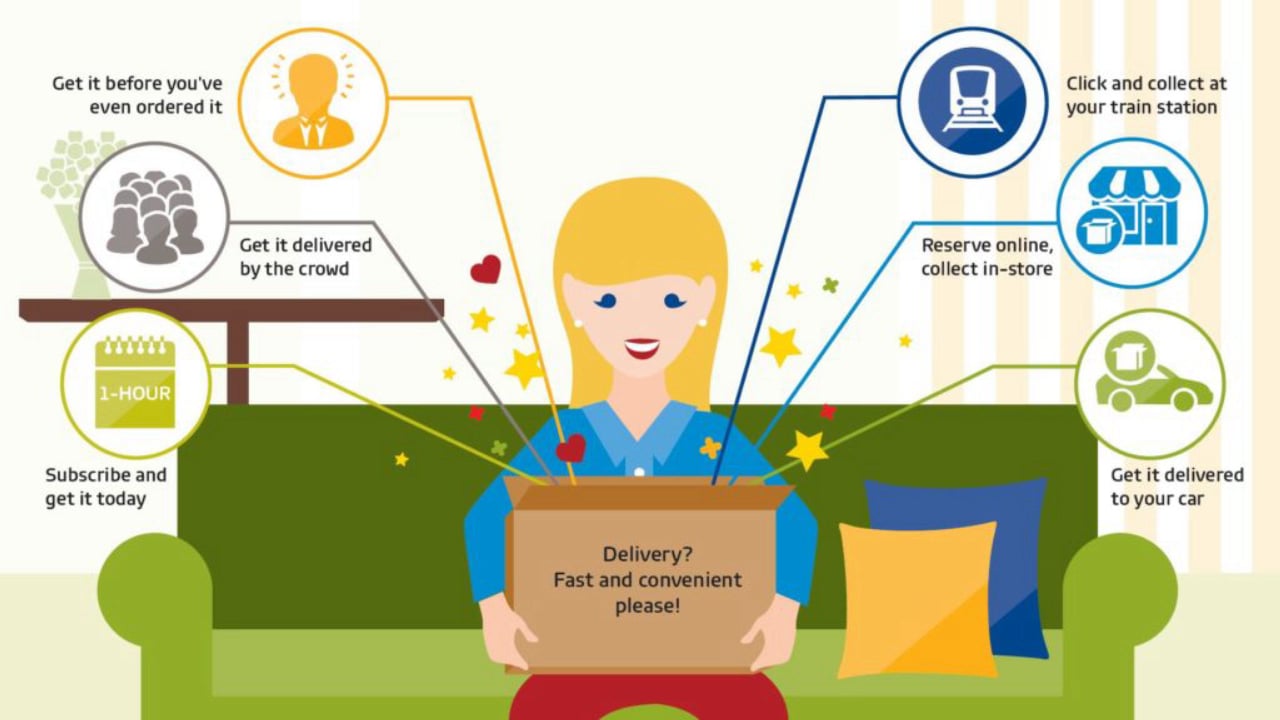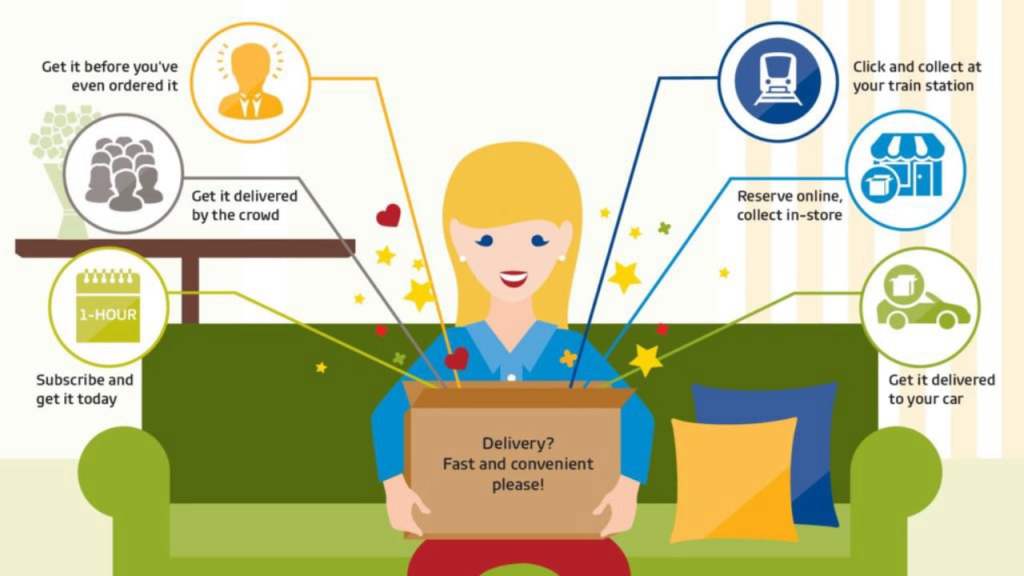Shoppers have a strong desire to receive goods when and where they want them, quickly and cheaply. Retailers are therefore harnessing the power of increasingly intelligent technology in order to fulfil this need.
Most consumers (90%) who took part in our 2016 FutureBuy study have had goods delivered to their home, while almost half (48%) have used click and collect services. And these delivery methods are set to grow, with 76% of shoppers indicating that they will use home delivery more, and 38% saying they will increase their use of click and collect. Additionally, more than a quarter (28%) of shoppers claim they will use parcel lockers with greater frequency in the future.
Indeed, being able to buy conveniently and speedily is the number one trend identified by our Retail Trend Monitor. But this is a challenge for retailers. Having the supply chain ready is a complex process. Furthermore, businesses have less control of the final part of the shopping process because deliveries are often outsourced.
A focus on the “last mile”
Being able to get a package to someone’s home fast, efficiently and cheaply is a competitive advantage. While retailers call the delivery process the “last mile”, shoppers often see it as the most important part of the process. Waiting for a parcel at home can be frustrating. For this reason, retailers have to develop ever more innovative ways for customers to receive deliveries on their own terms.

Click and collect services have been popular in the UK for several years now, and there are several emerging solutions to the delivery challenge.
Doddle will open 300 outlets across the UK in the next three years that shoppers can use to collect deliveries from. Located in and around train stations, and open seven days a week, Doddle uses a website as well as text and email alerts to notify shoppers when they have a delivery for collection. £24 million has been invested in the business, which also allows shoppers to return products via its outlets, taking the pain out of returning items.
Newcomer Parcelly, which recently partnered with Costcutter Supermarkets Group, lets people pick up deliveries from its 2,500 UK locations, including its KwikSave, Mace and Simply Fresh stores. This is a win-win for the retail chain because shops earn commission on each parcel collected, and attract more customers into their stores. For consumers, it means collecting goods at a time and place that’s convenient for them.
Amazon Prime is offering two-hour delivery slots to people in Berlin who subscribe to its annual service, and it is doing the same in some places in and around London. Also in the UK, AmazonFresh’s customers are now benefiting from one-hour delivery slots between 7am and 11pm. Since AmazonFresh launched this service, Tesco and Sainsbury’s have introduced same-day delivery. Tesco also offers a three-hour click and collect service. This type of competition has been called the start of the groceries “time war” by some commentators.
Meanwhile, DHL plans to make deliveries to people’s Smart cars in Stuttgart by accessing their vehicles using a single-use code. DHL plans to expand this service to Bonn, Berlin and Cologne.
The next level of delivery
Not only are retailers having to offer goods at lower prices than rivals, they are also having to make deliveries (and returns) more efficient and flexible. However, the innovations won’t stop there, with retailers and entrepreneurs pushing the boundaries all the time.
Amazon, for example, is experimenting with “anticipatory shipping”. Based on big data, it will predict what shoppers are going to buy before they make a purchase. It will then proactively ship out that product. Amazon is anticipated to have more luck with doing this for some categories than others. For example, it is expected that it will be easier to do this for consumables that follow more predictable purchasing patterns like diapers or baby food.
Similarly, crowd-sourced deliveries such as Nimber and MyWays are changing the retail environment as well as the expectations of consumers. Both offer people ways to earn money. Nimber (in beta at the moment) pays people to drop off parcels to someone at an address near where they are travelling to anyway. DHL-owned MyWays is an app that lets people (‘MyWayers’) pick up parcels for others from a DHL service point for a set fee.
With this new raft of ways for people to receive deliveries, the onus is on retailers to make sure they keep ahead of the game. That means matching consumers’ expectations, and fast.
For more information, please contact Alejandro Mondragon: Alejandro.Mondragon@gfk.com.




